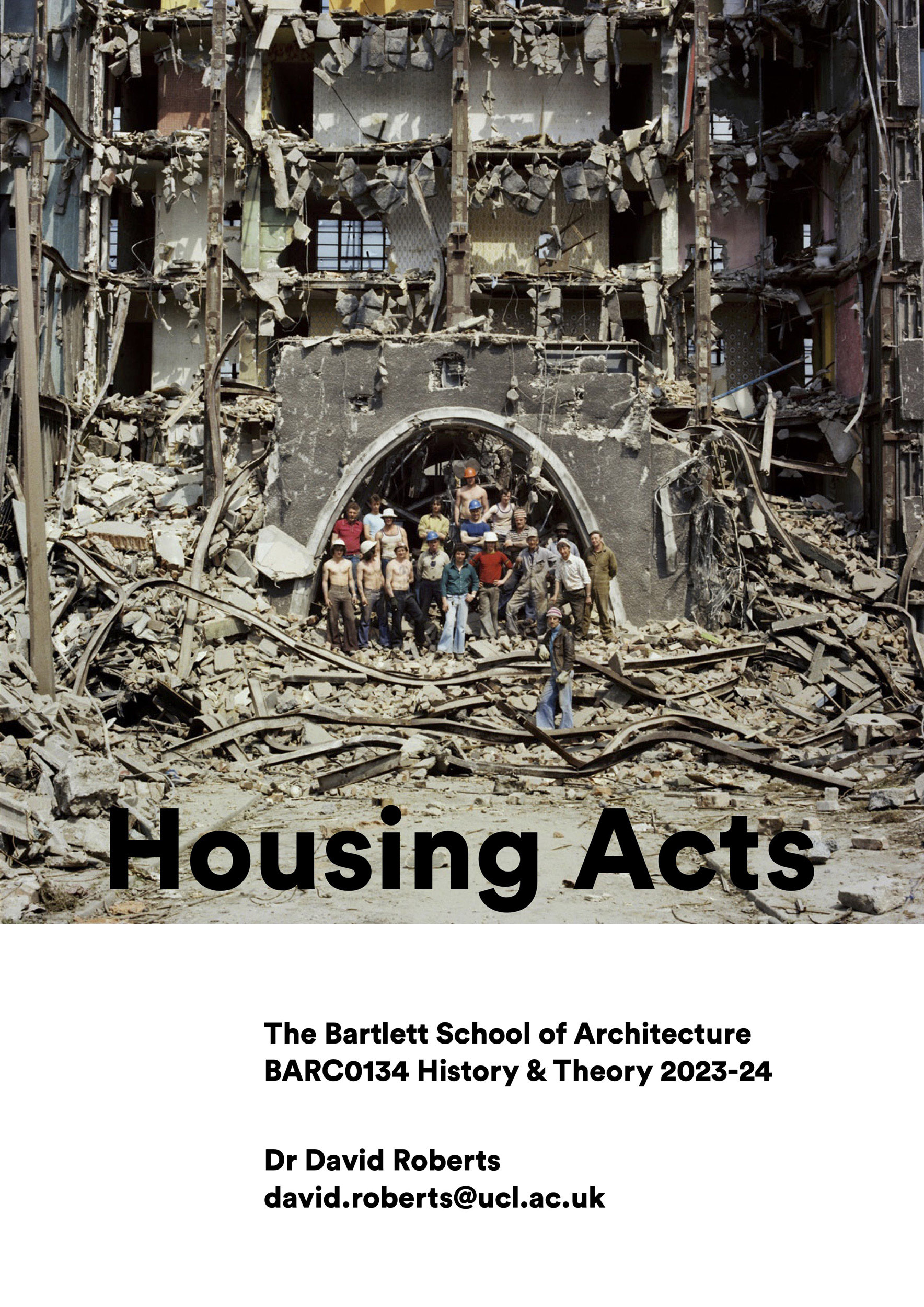Housing Acts
In this seminar we take one typology in our cities — housing estates — and explore how we have remade ourselves in them. Contemporary discussions share a common narrative — the death of estates — declared with relish as a disastrous experiment or with regret at their failure to deliver utopia. In both cases this story seems to foreclose any alternative endings. In our seminar we protest against this premature ending. We ask how do estates embody radical ideals? What are they like to live in? Why are these spaces and ideals disappearing? Who gains and suffers from these contentious processes of urban change? Most pressingly, from our position in London in the midst of a crisis where housing for a great many is increasingly insecure in the face of insufficient planning, provision, quantity, quality, affordability, stability and accessibility, how should we act?
A Housing Act is a written law passed by Parliament relating to housing. We expand on this to critically question housing acts by architects, artists and activists as well as residents, caretakers and demolition experts. Each week we examine historic housing projects and texts — what they say about the city we imagined and built, alongside a review of interventions in these same estates today — how these acts remake a city we want to live in. By considering the same buildings from this backwards and forwards perspective we interrogate how theoreticians and practitioners mobilise history to conceive, make, use and transform space, and how we can do so through our research.
Each week we explore and discuss themes of enduring significance, from revolution to migration. Through close readings of historical and theoretical texts we introduce a stock of conceptual and methodological approaches for thinking about the city. We learn how to analyse sources, evaluate artefacts and construct arguments. Our goal will be to develop skills of critical thinking, observation and writing that serve as a basis for independent research essays.
Excerpt
My cursor flickers under six bright letters. If you want to know a building now, you do not actually go to the building first; you enlist the help of a search engine. BALFRON TOWER: 75,900 RESULTS. This is where the building is. RELATED SEARCHES: BALFRON TOWER SALE; BALFRON TOWER CRIME. A blue, green and black list of results guide me to online encyclopaedias, newspaper articles, design profiles, personal blogs, films clips, music videos that seem sing an online chorus of Balfron Tower.
Balfrons
The Balfron
Balfron Towers is a
big brutalist
demonic
decaying tower block in
east London
in the shadow of Canary Wharf
in the Olympic fringe, which stands
25
27
26 storeys high.
Its 145, 146 post-war flats were built
in 1963, in the 50s,
in late 60s by an architect who moved in to the tower for a week
a few weeks
a couple of months
a week or two but that was it, and left
flooded walkways
cockroaches in the concrete
and residents fuming.
He was a tall and powerful man
married to an heiress and a Marxist to boot
precisely the sort of person to have strong and arrogant views about how to reorganise society.
The tower positively shouts his clear
but flawed view of the future:
verticality as the cure.
But why make the service tower separate?
Why make the whole lot so high and thin that it looks as if it might fall over?
I'm not proud of my next thought but I found myself wondering how come such a fantastic view has been wasted on the working classes and the destitute?
I was so startled by the quantity of spurious fact, dissonant opinion and rhetorical questions I discovered online I made a poem entirely from found text. The first one hundred search results argue over Balfron Tower’s height, age and even name, but agree on its failure.
